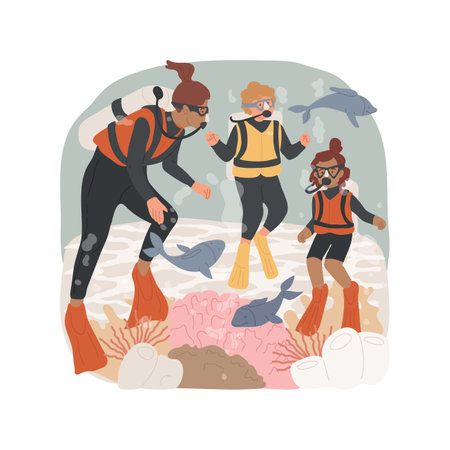Understanding Seasonal Fish Behavior
If you want to consistently catch fish in American waters, it’s essential to understand how the seasons change fish behavior and movement. Fish aren’t just swimming aimlessly—they’re always responding to their environment. In spring, as water temperatures rise, many species like largemouth bass and crappie move toward shallow spawning areas. Summer heat often pushes fish deeper or into shaded cover, while fall triggers a feeding frenzy as they bulk up for winter. When winter hits, fish slow down and seek out warmer, more stable spots—often in deeper water or near structures. These patterns play out in lakes, rivers, and reservoirs all across the U.S., but each region has its own quirks based on climate and local conditions. By tuning in to these seasonal shifts, you can pick lures that match not only what the fish want but also where they’ll be hanging out, turning every cast into a thoughtful move instead of just a shot in the dark.
2. Spring: Pre-Spawn Strategies and Lure Choices
As the ice melts and water temperatures start to climb, American lakes and rivers come alive with activity. Fish like largemouth bass, smallmouth bass, and walleye shake off winters chill and begin their pre-spawn rituals. This is prime time for anglers to take advantage of hungry, aggressive fish eager to fatten up before the big event. Understanding which lures to throw during this window can make all the difference between a successful outing and a slow day on the water.
Why Fish Get Active in Spring
When spring arrives, longer days and warming water trigger an instinctive response in fish. They become more active, feeding aggressively in preparation for spawning. This increased metabolism means theyre more likely to chase down moving baits and react to flashy presentations.
Top Lure Types for Pre-Spawn Action
| Lure Type | Best Use Case | Target Species | Tips & Tricks |
|---|---|---|---|
| Crankbaits | Covers water quickly; mimics baitfish | Bass, Walleye | Bounce off rocks or structure for reaction strikes |
| Spinnerbaits | Flashy, versatile in stained water | Bass, Pike | Vary retrieve speed based on water temp |
| Soft Plastics (swimbaits, creature baits) | Subtle presentation in cooler water | Bass, Panfish | Texas-rigged for fishing around cover |
The American Springtime Approach
In many U.S. regions, especially across the Midwest and South, crankbaits are a go-to choice for covering broad flats where bass stage before spawning. Spinnerbaits come into play when the water is a bit murky from spring rains—those flashing blades call fish in from a distance. Meanwhile, soft plastics really shine when you need to slow down your approach along brush piles or shallow coves where bass are starting to nest.
Spring is about adapting to changing conditions. Pay attention to local reports—water clarity, temperature swings, and even which insects or baitfish are showing up can help dial in your lure selection. With these seasonal strategies in mind, youll be ready to capitalize on one of the most exciting times of year for American anglers.

3. Summer: Beating the Heat and Matching the Hatch
When summer sets in and the sun blazes overhead, American waters come alive with activity—but so does the challenge of enticing bites. The warm months call for smart lure choices that match both the mood of the fish and the changing conditions throughout the day.
Topwater Thrills at Dawn and Dusk
The early bird gets more than just worms—dawn and dusk are prime time for explosive topwater action. During these low-light hours, bass and other predators cruise the shallows, hunting actively near weed edges or submerged structures. This is when you’ll want to tie on poppers, frogs, or buzzbaits. The surface commotion mimics vulnerable prey, drawing aggressive strikes that every angler dreams about. There’s something unforgettable about watching a largemouth break the silence with a heart-pounding blowup as the mist rises off the water.
Midday Adjustments: Go Deep or Get Finesse
Once the sun climbs high and temperatures soar, fish tend to retreat to deeper, cooler waters or hunker down under thick cover. Now’s the time to swap out those splashy topwaters for finesse presentations or deep-diving lures. Try soft plastics like shaky heads or drop shots around shaded docks and brush piles. Offshore humps and ledges become hotspots for crankbaits and jigging spoons—just remember to slow your retrieve as lethargic fish won’t chase far in the midday heat.
Pro Tip: Match the Hatch
Summer is also “match-the-hatch” season in many parts of America. Pay attention to what baitfish or insects are active where you’re fishing. Small swimbaits, blade baits, or downsized hardbaits that resemble local forage can make all the difference between a slow day and a limit filled fast. Don’t forget to adjust color selection based on water clarity and light penetration—natural shades work wonders in clear water, while brighter hues can help in stained or shadowy spots.
By adapting your approach as conditions shift throughout those long summer days, you’ll keep your lines tight—and maybe even land your personal best under that big blue American sky.
4. Fall: Feeding Frenzies and Reaction Baits
As the leaves turn and the air gets crisp, American waters come alive with a unique energy. Fall is a magical time for anglers—fish sense winter’s approach, sparking feeding frenzies that can lead to some of the year’s most exciting catches. If you want to maximize your autumn outings, it’s all about tapping into this aggressive behavior with the right reaction baits.
Why Fish Get Aggressive in Fall
With dropping water temperatures and shorter days, bass, walleye, and other game fish start bulking up for winter. They’re more likely to strike at fast-moving lures, making fall perfect for aggressive presentations. This isn’t the season for finesse; instead, think bold movements and noisy profiles.
Top Lure Choices for Fall
| Lure Type | Best Use | Tips for Success |
|---|---|---|
| Jerkbaits | Casting near bait balls or along weed edges | Use erratic jerks and pauses to mimic injured prey |
| Bladed Jigs (Chatterbaits) | Working shallow flats and around submerged vegetation | Choose shad or bluegill patterns to match local forage |
| Lipless Crankbaits | Ripping through dying grass beds or open water | Vary retrieve speed; let bait flutter down on pauses |
The Power of Reaction Strikes
This season, focus on triggering instinctive bites. Fish aren’t always feeding from hunger—they’ll often lash out at anything that darts past them quickly. That’s where reaction baits shine: their vibration, flash, and sudden movements can provoke even lethargic fish.
Pro Tip: Adjust Your Retrieve
As water temps dip, don’t be afraid to experiment. Sometimes a steady, fast retrieve fires up schools; other times, pausing mid-retrieve lets your lure flutter enticingly, drawing strikes from followers.
If you embrace the chaos of fall and throw these proven lures with confidence, you’ll find yourself landing some of your biggest fish just before winter sets in.
5. Winter: Cold Water Tactics and Finesse Lures
When winter rolls in and water temperatures plummet, many American anglers know the bite can get downright tough. Fish slow way down as their metabolism drops, making traditional power fishing a game of patience rather than action. But with the right finesse tactics, you can still tempt even the most sluggish winter bass, trout, or walleye into biting.
Downsizing is Key
Cold water calls for smaller profiles. This is the time to swap out those big summer baits for downsized jigs and compact spoons. A 1/8-oz marabou jig or a tiny tungsten ice spoon can work wonders, especially when fished vertically around deep holes or submerged structure. The subtle flutter of a small spoon mimics an easy meal, perfect for fish that don’t want to chase.
Slow Down Your Retrieve
The biggest mistake folks make in winter is working their bait too fast. Slow everything down—think about barely crawling your lure along the bottom, just enough to keep it moving. On tough days, it’s not unusual to let your jig sit still for several seconds between tiny hops. Fish are conserving energy, so give them plenty of time to inspect your offering.
Tweak Your Presentation
This season is all about subtlety. Swap out rattling lures for silent ones and use natural colors that blend into the cold, clear water—think shad, silver, or muted browns. Light fluorocarbon leaders will help your presentation look more natural and less intimidating to wary winter fish.
Local Wisdom Counts
Across America’s lakes and rivers—from Texas reservoirs to Midwest farm ponds—anglers swear by these cold-water finesse tricks when nothing else works. Don’t hesitate to ask locals at your favorite bait shop what’s hot (or not) this time of year; often, a simple tip about color or retrieve speed can turn a slow day into a memorable one.
Winter fishing may require a little extra patience and some nimble fingers, but those chilly days on the water can reward you with some surprisingly big catches—all while enjoying the quiet beauty of America’s frozen landscapes.
6. Regional Tweaks for Local Waters
When it comes to fishing in America, one size definitely doesn’t fit all. Adapting your lure selection to match local fisheries is key, whether you’re chasing smallmouth up north, largemouth in the southern states, or targeting saltwater species along the coasts. Every region has its quirks—and so do the fish!
Northern Tactics: Smallmouth Bass
In northern lakes and rivers, especially around the Great Lakes or upstate New York, smallmouth bass have a reputation for being aggressive but picky about presentation. Cooler water often means downsizing your lures—think finesse jigs, tubes, and hair jigs. Natural bait colors like green pumpkin or brown get more bites here, especially as water clarity tends to be higher. When the water warms up in late spring and summer, crankbaits and topwaters become more effective. Don’t forget to mimic local forage like gobies or crayfish.
Southern Strategies: Largemouth Hotspots
The further south you go—from Texas reservoirs to Florida’s famed lakes—largemouth bass rule the scene. These waters warm up faster and stay warm longer, which means soft plastics like Senkos and creature baits shine almost year-round. In heavy cover, try flipping a jig or swimming a big worm through lily pads and grass mats. Bright colors like junebug or watermelon red flake often outperform natural hues in stained water. Topwater frogs are a must during summer mornings when bass are lurking in shallow weed beds.
Coastal Considerations: Saltwater Species
If your adventures take you to American coastlines, lure choices change dramatically. Redfish and speckled trout love paddle-tail swimbaits rigged on weighted hooks—especially when you match the hatch with local baitfish colors. For stripers along the East Coast, big poppers or metal spoons can trigger epic strikes during migration runs. On the West Coast, don’t overlook jerkbaits for calico bass around rocky points and kelp beds.
Smart Adapting: Watch Local Anglers
No matter where you fish, keep an eye on what locals are throwing—it’s often the best clue about what works right now. Water clarity, temperature swings, and available forage all influence which lures get results in each region. Don’t be afraid to ask at local tackle shops; anglers love sharing tips about their home waters!
Final Thoughts
Seasonal changes set the stage, but regional tweaks make sure you’re speaking the same “language” as your target species. With a little observation and experimentation, you’ll find just the right lure for wherever your next American fishing adventure takes you.


